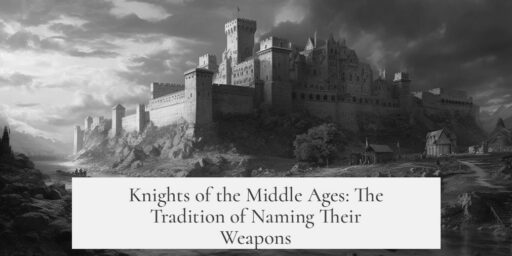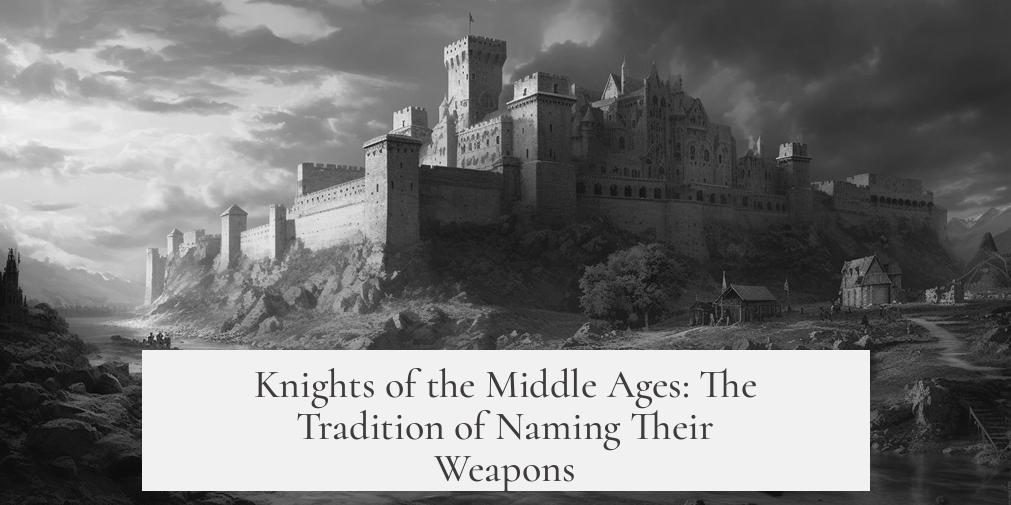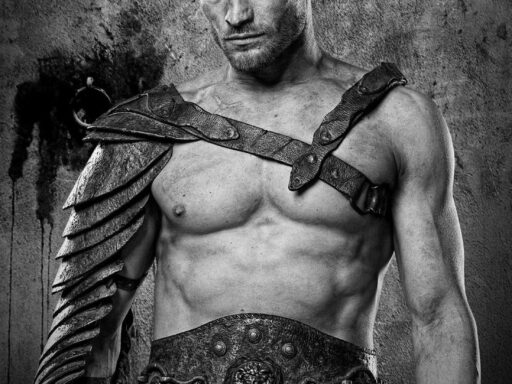Some knights during the Middle Ages named their weapons to express pride and the deep value they placed on these vital tools. Possessions were scarce, and a sword or weapon was among the most precious items a warrior could own. Naming a weapon symbolized its importance and the strong bond between the knight and his arms.
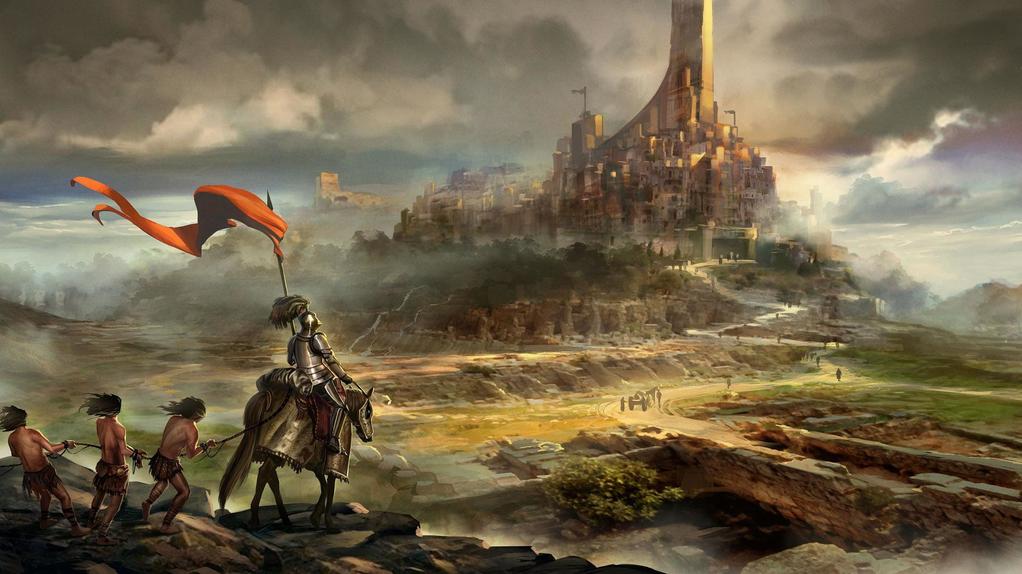
The tradition likely started in early medieval cultures like the Anglo-Saxons and Vikings. For example, Viking King Magnus Barelegs wielded a sword called “Legbiter.” Naming weapons was common among these warrior groups, where the relationship between man and weapon had life-or-death significance.
Knights did not only name swords. Other weapons, shields, and even armor sometimes received names. This practice reflected the deep psychological connection warriors had with their equipment. It parallels traditions in other cultures, such as American Frontiersmen naming their rifles, showing respect and recognition for their gear.
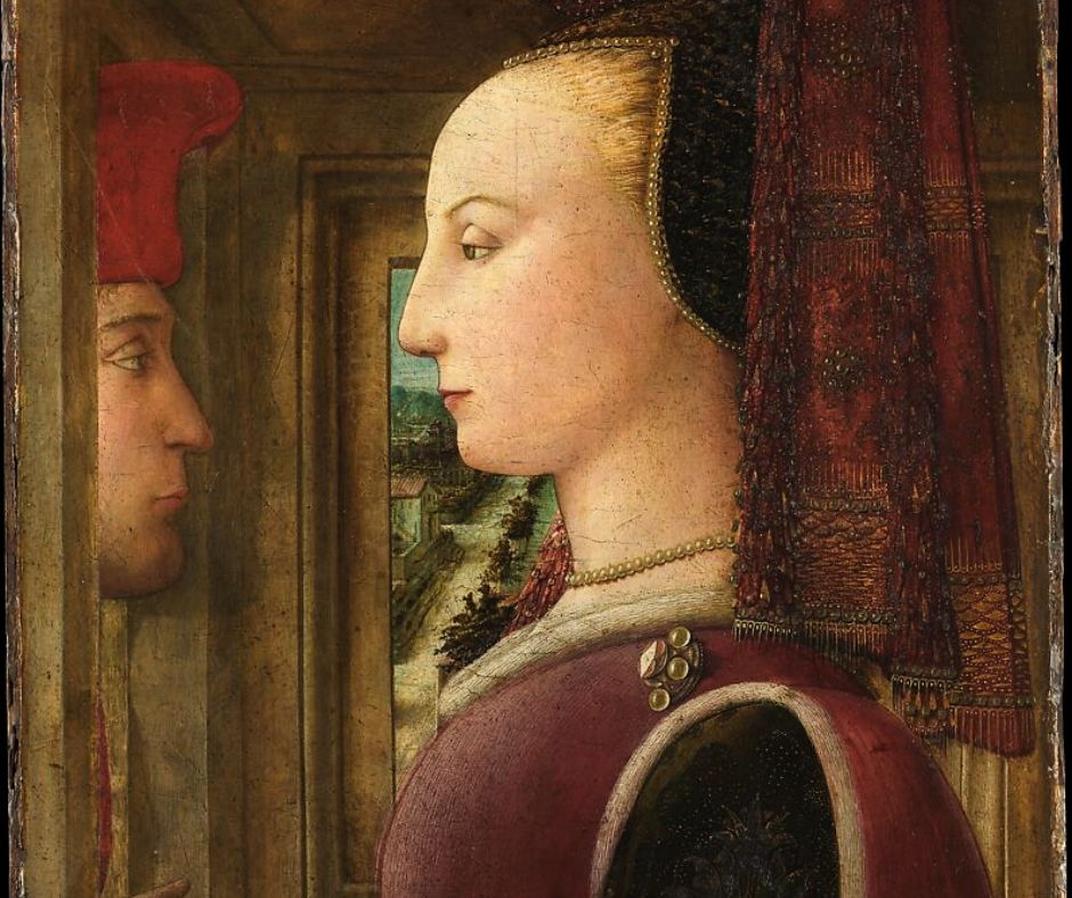
In the later Middle Ages, especially during the high and late continental knightly traditions, this naming became less formal. However, some warriors likely kept the habit informally, giving personal nicknames to their weapons.
Several famous swords highlight this tradition:
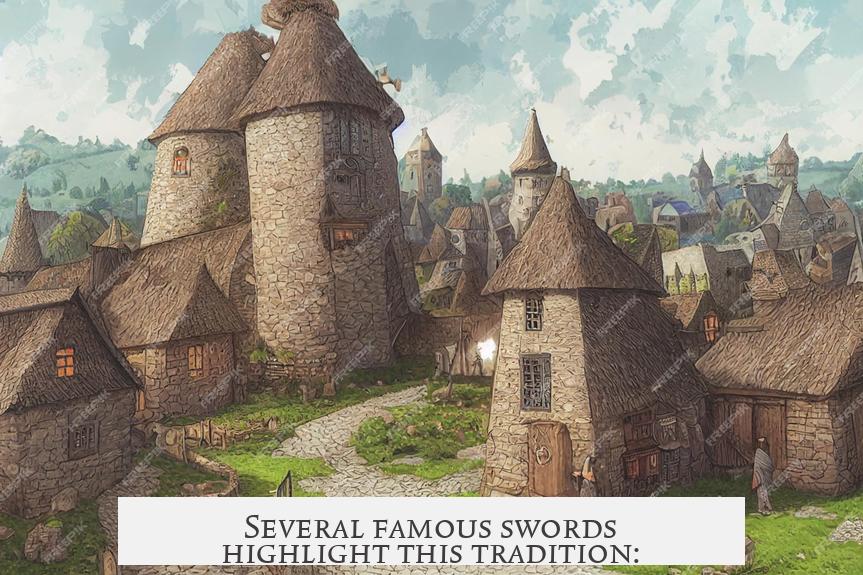
- Edward the Confessor’s “Sword of Mercy” or “Curtana” — part of French epic tradition, believed to have belonged to Ogier the Dane.
- El Cid’s “Tizona” — currently displayed at the Museo de Burgos, Spain.
- Charlemagne’s sword “Joyeuse” — famed across medieval legends.
These named weapons served as symbols of status, honor, and personal history. They connected knights to their past and to the broader heroic narratives of their culture.
- Knights named weapons to honor their value and importance.
- The custom originates from Anglo-Saxon and Viking warrior cultures.
- Not only swords but also armor and shields could be named.
- The tradition declined in formality later but persisted informally.
- Famous examples include Curtana, Tizona, and Joyeuse.
Why Would Some Knights During the Middle Ages Name Their Weapons?
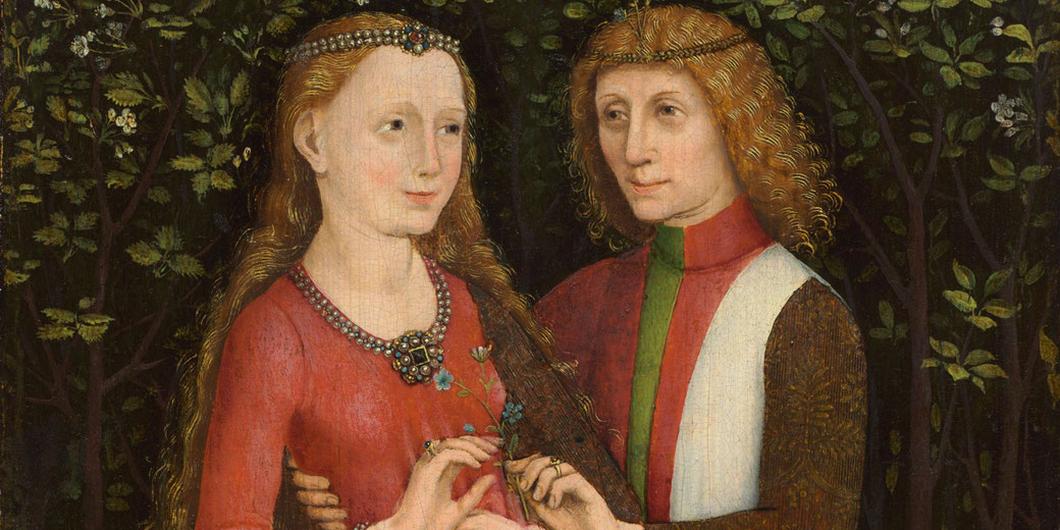
Knights named their weapons as a mark of respect, pride, and the deep bond they shared with these vital tools of survival and honor. In an era when possessions were scarce and survival was a daily battle, a knight’s sword or shield was more than metal—it was a trusted companion. Let’s explore why these names mattered so much, and how this fascinating tradition came alive.
If you’ve ever wondered why some knights didn’t just carry around a sword, but a named sword, you’re in for a story as sharp as a blade itself.
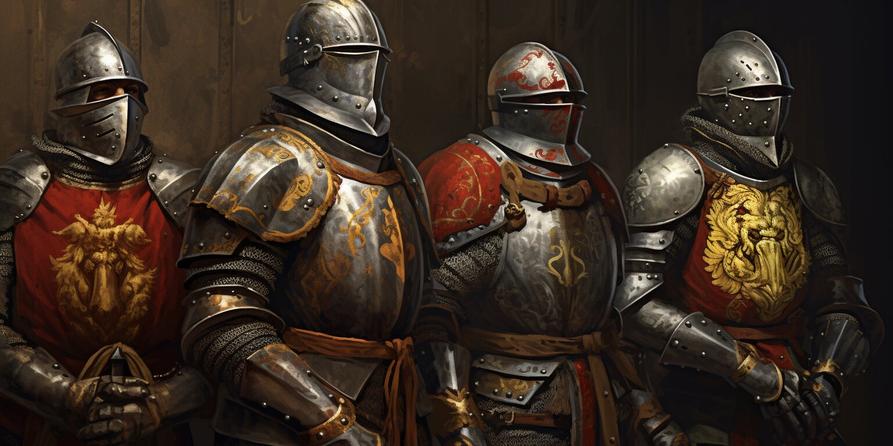
The Value and Pride Behind Naming Weapons
The Middle Ages were not exactly a time of consumer abundance. People didn’t have closets bursting with gadgets or drawers full of electronics. Instead, a knight’s sword stood out as one of the most precious possessions someone could own. Each weapon represented countless hours of skilled craftsmanship and often was inherited or gained from epic battles.
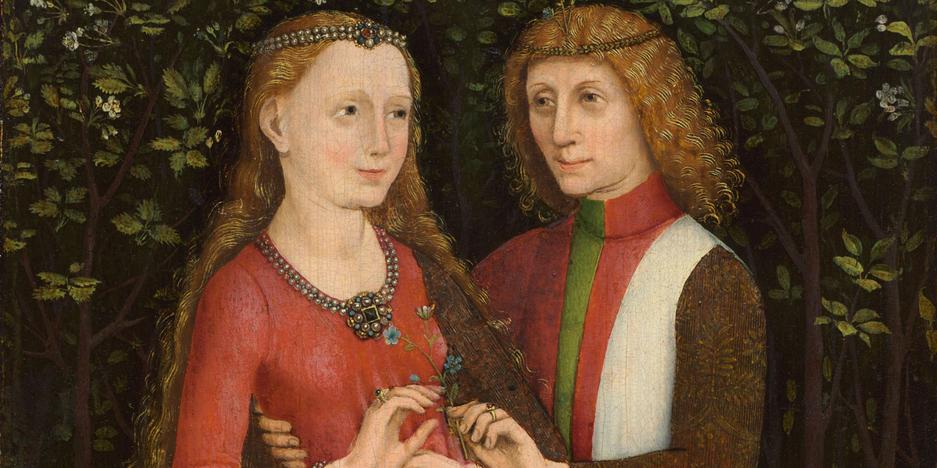
So, giving a sword or shield a name wasn’t just about etiquette—it was about showing off pride in something essential. Naming a weapon personalized it, like giving a voice to a silent partner in combat. The weapon became a symbol of the knight’s honor, skill, and identity.
Where Did This Tradition Begin?
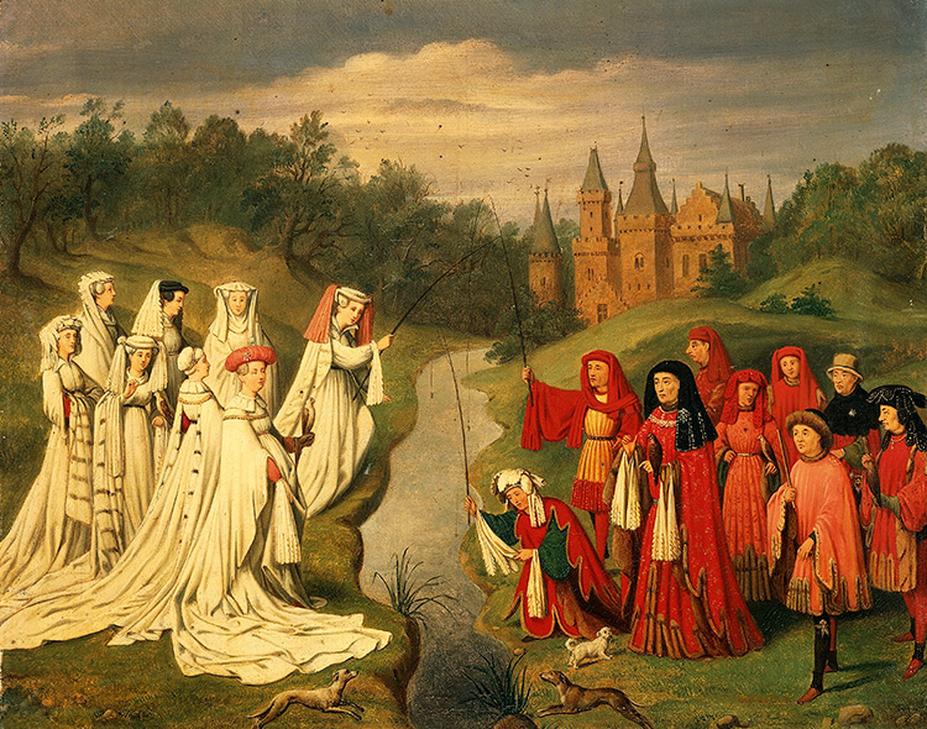
You might be surprised to learn that naming weapons goes back to the early Middle Ages, particularly among the Anglo-Saxons and Vikings. These warrior cultures valued their weapons so deeply that they named them with grand titles. The Viking King Magnus Barelegs, for example, wielded a sword called Legbiter—quite a fearsome name, don’t you think?
This practice helped weave a narrative around their arms, linking the weapons to heroic deeds and legendary tales. It was like storytelling through steel, where a name could inspire terror in foes or bring hope to allies.
More Than Just Swords: The Range of Named Items
Now, it wasn’t only swords that received titles. Some knights and warriors named their armor, shields, and even other weapons, forging a strong psychological bond with these items. Think of it this way: just as an American Frontiersman in later centuries might name his rifle, these medieval warriors attributed names to their arms as if they were living companions.
This bond was practical too. War is life-threatening, and a weapon that “knows” its owner could turn the tide of battle. Naming a weapon might help embed it deeper into the knight’s awareness, making it an extension of his own body and spirit.
When and Why Did This Practice Fade?
As the Middle Ages progressed into the high and late phases, the tradition of formally naming weapons declined, especially in continental Europe’s chivalric circles. Knighthood evolved, focusing more on courtly manners and formal codes, possibly leaving less room for weapon-naming ceremonies.
But don’t think the idea completely vanished. Many knights still gave personal, informal nicknames to their gear. It was a quieter tradition, tucked away in anecdotes and personal stories rather than grand declarations.
Famous Named Weapons That Left a Mark
Some named weapons reached legendary status, featured in history and myth alike. Here are a few you might find interesting:
- Curtana (the Sword of Mercy): Belonging once to Edward the Confessor, Curtana is a famous sword embedded deeply in French and English legend. It’s said to have belonged to Ogier the Dane, a legendary figure in medieval stories.
- Tizona: The sword wielded by El Cid, one of Spain’s most celebrated knights, still displayed proudly in the Museo de Burgos. This sword is a tangible reminder of how naming a weapon gave it a life beyond just a piece of metal.
- Joyeuse: Charlemagne’s famed sword, Joyeuse, may have been a symbol of his rule and heroic stature, entwining the king’s identity with the weapon’s name.
Can you imagine naming your smartphone or car with a title worthy of royalty? Maybe there’s something timeless about the human desire to humanize the tools that define us.
What Can We Learn From This Today?
In a way, naming a weapon brought knights closer to their gear and heightened their psychological connection to their fighting tools. This connection is valuable in any high-stakes situation. Whether in sports, military service, or even creative work, a personal bond with your tools can increase focus and pride.
So next time you find yourself fondly naming your favorite gadget or vehicle, think of the knights and warriors, thousands of years back, christening their swords for the same reasons: respect, pride, and an unbreakable bond.
Does modern life need another tradition like this? Naming sometimes transforms objects into more than things—into symbols of our journey. More importantly, it reflects the human desire to connect with what matters.
Why did knights in the Middle Ages name their weapons?
Knights valued their weapons highly because they owned few possessions. Naming their weapons showed pride and respect for these vital tools in battle.
Did only swords receive names, or were other items named too?
Other weapons, armor, and shields were also named. Warriors felt strong bonds with these items, seeing them as essential to survival.
Where did the tradition of naming weapons come from?
This practice likely started in early medieval cultures like the Anglo-Saxons and Vikings. For example, Viking King Magnus Barelegs named his sword ‘Legbiter.’
Did the tradition of naming weapons continue through the Middle Ages?
In later medieval Europe, especially the high and late Middle Ages, formal naming declined. However, some knights still gave informal nicknames to their arms.
Can you give examples of famous named weapons?
Yes. Edward the Confessor’s ‘Sword of Mercy,’ El Cid’s sword ‘Tizona,’ and Charlemagne’s sword ‘Joyeuse’ are well-known examples of named medieval weapons.
